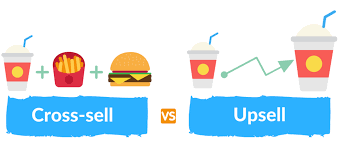Cross-selling for most people means selling related products or services to their customers based on prior purchases. Sometimes the terms cross-selling and up-selling get used interchangeable, but there are some subtle differences. Cross-selling is trying to get customers to purchase additional complementary products, while an upsell is trying to get someone to buy something that is more expensive.
The most obvious benefit of implementing a cross-sell strategy is to increase revenue. From a direct marketing standpoint, these sales are normally really high ROI. Customers respond at a higher rate than prospects do and when you couple that with relevance principals, in this case proposing something that is aligned with previous purchases, then a good percentage of your customers are going to buy. There is an old marketing adage that if you can get customers to buy 3 or more lines they’re a higher margin customer.
The easiest way to get started on cross-selling your customers is to present an offer for a complementary product line. For example, if a customer buys a blazer, show them an offer for accessories or shoes, not a particular pair of shoes or scarf. Keep it simple. If someone adds a winter coat to their cart, you can pair it with scarves, hats and gloves.
Once you have that basic product matrix down so you know what items you are pairing together, you next should look at segmentation. This next step brings your transaction customer data into the mix. You can show offers based on that particular customer’s data to drive relevant emails, social ads, web pages, direct mail, and more.
This is where data science and AI can make a large impact on your ROI. It can help you decide who gets what and when they get it. Messaging, creative and offers all need to be incorporated in the logic that drives your content. Some of the content is going to be based on segment, some on product lines, some on location and possibly other factors. Particularly for those who have brick and mortar outlets or dealers.



